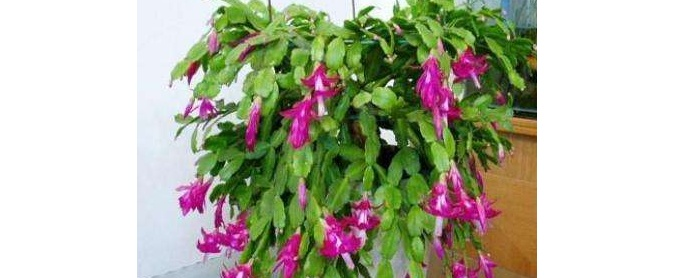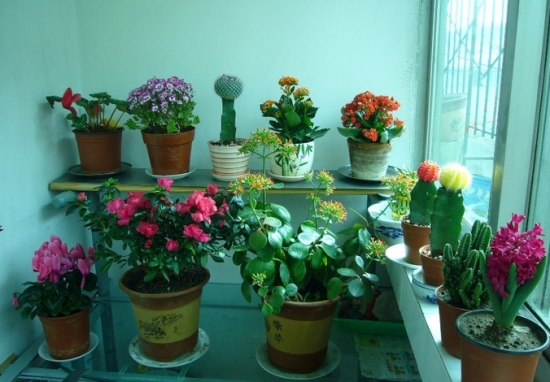How to water family flowers
Water is an indispensable substance for all biological activities. Flowers and trees need sufficient water for photosynthesis, respiration, transpiration and so on. After watering, potted flowers can absorb the effective nutrients dissolved in the potted soil in time; on the other hand, through the supply of water, the carbon dioxide dissolved in water can be infiltrated into the cells, made into organic matter by photosynthesis, and transported to other parts to maintain the normal life of plants. Water can also regulate the temperature and humidity between the plant and the pot soil and the environment.
The key to whether potted flowers can be planted well is to supply all kinds of water needed for potted flowers at different stages of growth and development. Because the basin soil is limited, flowers and trees are limited to curl pots. If the soil is too dry, flowers and trees will wilt or even die. On the contrary, if the soil is too moist, it will suffocate the roots, affect respiration and cause rotting roots.
Watering should be timely and appropriate according to the habits of flowers and trees and climatic conditions. No matter what kind of potted flowers and trees are watered in any season, they should be "dry and thoroughly watered", and must not be watered half of the wet surface. Watering should be in the evening in summer and in the morning in winter. The water temperature is similar to that of basin soil. There is more watering in drought, little or no watering in cloudy and rainy days. Under the condition that flowers are not damaged by water shortage, it is usually safer and more reliable to keep less water in the soil than too much water.
In family flower cultivation, if there is no one to take care of the home for a short time, the small flowerpot can be put into a large basin or wooden box containing wet sand in advance, so that the moisture in the wet sand can slowly infiltrate into the small pot to meet the water demand of the flowers in the small flowerpot. You can also put a large basin of water next to the flowerpot, prepare a thick towel, soak one end of the towel into the water, and press the other end directly on the bottom of the flowerpot. Due to the role of capillaries, the water will constantly moisturize the potted flowers from the bottom of the pot, so as to prevent the potted flowers from losing water and dying.
How to apply Fertilizer to Flowers in Family farming
As the root growth of potted flowers and trees is limited and the intake of nutrients is less, it is necessary to have sufficient fertilizer to ensure its normal growth and development. But it is not that the more fertilizer, the better, requiring timely and appropriate amount. It is understood that there are many examples of flower deaths caused by the use of fertilizer or improper watering among family flower lovers. They are eager for flowers and trees to grow, so they often fertilize, water, or apply unripe fertilizers. As a result, it backfired, resulting in poor growth and even death. In general, sufficient attention should be paid and necessary measures should be taken when the following situations occur.
1. The growth of flowers and trees is thin, the plant is underdeveloped, the leaf color is abnormal and pale, or the spots are white, which are the symptoms of lack of fertilizer, so nitrogen fertilizer should be applied in time, and some barnyard manure and fertilizer containing phosphorus and potassium should be applied appropriately.
two。 The growth of branches and leaves is particularly luxuriant, and in a short period of time, the buds grow, the buds are small, and the development stops, resulting in falling buds and falling flowers. This is caused by improper use of fertilizer and excessive application of nitrogen fertilizer. If potted rose is applied too much nitrogen fertilizer in spring, the branches and leaves are luxuriant, overgrown and do not blossom. On the other hand, citrus has the phenomenon of continuous flower drop and fruit drop. The remedy is to stop applying nitrogen fertilizer and use some phosphorus and potassium fertilizer.
3. Soon after fertilizing the flowers and trees, it was suddenly found that the plants withered and the leaves hung upside down, which was caused by the application of unripe fertilizer or overly concentrated fertilizer. In severe cases, flowers and trees die quickly. With the application of this kind of unrotten fertilizer, it is fermented in a basin to produce warm heat, which burns the roots to death. Or although fermented, but due to excessive concentration of fertilizer, causing reverse osmosis, resulting in the death of flowers and trees. If the above situation is found, some clear water should be irrigated to dilute its concentration. In more serious cases, it is necessary to change the basin and soil in time, trim the roots properly, and intensively trim the branches and leaves on the ground, place the basin in the shade, and often spray water to facilitate recovery.
Application method: there are two kinds of fertilizers for potted flowers: base fertilizer and topdressing fertilizer. Base fertilizer is used when mixing mud on the basin or in winter, mainly including cake fertilizer, bone meal, hair, poultry feet and so on. Topdressing is applied during the growth period of flowers and trees, usually once every half a month, not too much, so as to "apply more thin fertilizer", that is, the mature fertilizer is mixed with water, or combined with watering. For the fruiting potted flowers, they can be stopped for a short time before and after flowering. Flowers and trees that like acid soil, such as camellia, rhododendron, Michelia, etc., had better be mixed with 1% ferrous sulfate when fertilizing to promote luxuriant branches and leaves.
In general, potted flowers should be fertilized in the growing period to achieve timely and appropriate amount. If you encounter plum rain or continuous rain, you can sprinkle a small amount of cake fertilizer powder on the surface of the potted soil for flowers and trees to absorb slowly. According to the needs of nitrogen, phosphorus and potassium in different development stages of flowers and trees, appropriate application should be made, such as more nitrogen fertilizer should be applied in the period of long branches and leaves, and more phosphorus and potassium fertilizers should be applied to flowers and trees that bloom and bear fruit. There are a lot of phosphorus and potash fertilizers in the family, such as bottle water for washing milk and eggshell liquid, which are good phosphate fertilizers for watering potted flowers. Plant ash is a kind of potash fertilizer, which can promote stem growth and enhance the ability of cold tolerance and overwintering. Fertilization should be less in summer. Some cold-fearing flowers and trees should stop fertilizing after October. The soil should be loosened properly before fertilization to facilitate the absorption of flowers and trees. Chemical fertilizer is also a kind of rapid topdressing, and all kinds of fertilizer powder or tablets are sold on the market. These powders or tablets are both hygienic and convenient, and most of them are compound fertilizers containing a variety of nutrients, which can be used. However, it must be applied in strict accordance with the nature, composition and content of the chemical fertilizer, and must not be too concentrated so as to avoid fertilizer damage.
How to strip propagation of family cultured flowers refers to the propagation method in which the branches do not leave the mother and make them take root and form new plants on their fixed parts. Strip propagation is often used in cutting flowers that are difficult to take root. The plants that grow into Zhuo by pressing are larger and the seedlings grow quickly. According to the different position of pressing strip, the meaning can be divided into pile soil pressing strip and high branch pressing strip. (l) stacking earth strips. Soil crimping refers to piling soil around the mother tree in spring, burying most of the branches in the soil, and often keeping the heap moist. After the branches take root, they are cut off from the base of the strip and separated from the mother plant to form new plants, pots or transplants. (2) high branch crimping. High branch striping is used for flowers with tall plants and branches that are not easy to bend. First cut or ring peel the branches, then surround the wound with flowerpots, plastic film, paper tubes, etc., fill the interior with water-retaining materials such as culture soil and moss, fasten and fix them, and keep them moist regularly. After rooting, it is cut from the lower end to form a new plant.
- Prev

Matters needing attention in family indoor flower culture
The cultivation of flowers in the room can not only make our room colorful and vibrant, make us refreshed and enjoy the interest of life, but also because flowers can absorb carbon dioxide and spit out oxygen under photosynthesis. From the beauty to purify the indoor air, bring us a fresh and comfortable feeling
- Next

How to apply Fertilizer to Flowers in Family farming
As the root growth of potted flowers and trees is limited and the intake of nutrients is less, it is necessary to have sufficient fertilizer to ensure its normal growth and development. But it is not that the more fertilizer, the better, requiring timely and appropriate amount. It is understood that there are many examples of flower deaths caused by the use of fertilizer or improper watering by family flower lovers.
Related
- Fuxing push coffee new agricultural production and marketing class: lack of small-scale processing plants
- Jujube rice field leisure farm deep ploughing Yilan for five years to create a space for organic food and play
- Nongyu Farm-A trial of organic papaya for brave women with advanced technology
- Four points for attention in the prevention and control of diseases and insect pests of edible fungi
- How to add nutrient solution to Edible Fungi
- Is there any good way to control edible fungus mites?
- Open Inoculation Technology of Edible Fungi
- Is there any clever way to use fertilizer for edible fungus in winter?
- What agents are used to kill the pathogens of edible fungi in the mushroom shed?
- Rapid drying of Edible Fungi

